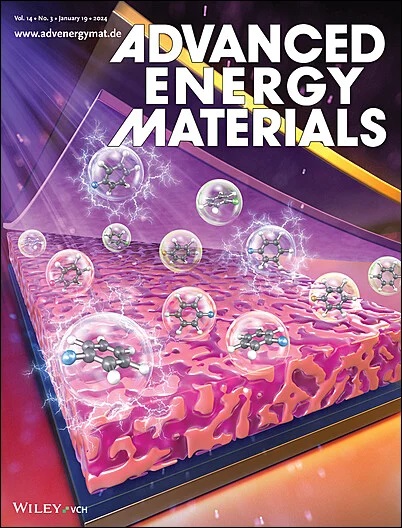Unlocking Quasi-Solid-State Anode-Free Zinc Metal Batteries Through Robust Bilayer Interphase Engineering
IF 24.4
1区 材料科学
Q1 CHEMISTRY, PHYSICAL
引用次数: 0
Abstract
Anode-free aqueous zinc (Zn) metal batteries (AFZMBs) possess an optimal battery architecture configuration because no excess Zn source is involved in the charge/discharge processes, rendering it feasible to enhance the energy density of batteries. However, rapid capacity fading due to the unstable anode-side current collector/electrolyte interfacial chemistry, which results in Zn dendrite growth, impedes their practical application, especially in quasi-solid-state AFZMBs. Herein, a robust bilayer interphase design strategy between a gel electrolyte and a copper current collector is proposed to achieve high-energy and stable quasi-solid-state AFZMBs. Utilizing the upper mass transfer layer to regulate rapid Zn ion transport and the lower zincophilic electron transfer layer to induce initial uniform Zn nucleation and balance the surface electric field, uniform dendrite-free Zn deposition and prominent reversibility are achieved. Therefore, the robust bilayer interphase design strategy significantly improves the cycling stability of quasi-solid-state Zn//I2 batteries. Additionally, the fabricated quasi-solid-state AFZMBs employing a pre-intercalated VO2 cathode deliver attractive energy and power densities (186.1 Wh kg−1/470 W kg−1 and 145.3 Wh kg−1/1.74 kW kg−1, based on the active material). Moreover, the successful extension of the bilayer interphase design to flexible AFZMBs offers a promising pathway for the development of wearable electronic devices.

求助全文
约1分钟内获得全文
求助全文
来源期刊

Advanced Energy Materials
CHEMISTRY, PHYSICAL-ENERGY & FUELS
CiteScore
41.90
自引率
4.00%
发文量
889
审稿时长
1.4 months
期刊介绍:
Established in 2011, Advanced Energy Materials is an international, interdisciplinary, English-language journal that focuses on materials used in energy harvesting, conversion, and storage. It is regarded as a top-quality journal alongside Advanced Materials, Advanced Functional Materials, and Small.
With a 2022 Impact Factor of 27.8, Advanced Energy Materials is considered a prime source for the best energy-related research. The journal covers a wide range of topics in energy-related research, including organic and inorganic photovoltaics, batteries and supercapacitors, fuel cells, hydrogen generation and storage, thermoelectrics, water splitting and photocatalysis, solar fuels and thermosolar power, magnetocalorics, and piezoelectronics.
The readership of Advanced Energy Materials includes materials scientists, chemists, physicists, and engineers in both academia and industry. The journal is indexed in various databases and collections, such as Advanced Technologies & Aerospace Database, FIZ Karlsruhe, INSPEC (IET), Science Citation Index Expanded, Technology Collection, and Web of Science, among others.
 求助内容:
求助内容: 应助结果提醒方式:
应助结果提醒方式:


